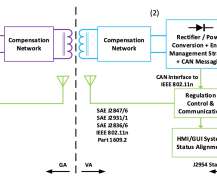Ohio State team wins EcoCAR2 competition with E85 series-parallel plug-in hybrid Malibu
Green Car Congress
JUNE 13, 2014
announced that the Ohio State University (OSU) team was the overall winner of the EcoCAR 2: Plugging In to the Future finals. The OSU team’s engineered 2013 Chevrolet Malibu featured a series-parallel plug-in hybrid drive with E85-fueled engine technology. l/100 km), while using 315 Wh/mile of electricity.







































Let's personalize your content